
Guests
- Craig Flournoywas an investigative journalist with The Dallas Morning News for 22 years, where he covered HUD. He co-authored the three-part series “Toxic Traps.” He is a Pulitzer Prize winner for a series on racial discrimination in public housing.
- Doug Kantordeputy chief of staff for the Department of Housing and Urban Development (HUD).
- Rev. Roy Malveauxhead of People Against a Contaminated Environment.
- Sally Dickensmother of two and resident of the Grand Camp Projects in Texas City.
A three-part series published last week in The Dallas Morning News has shown that close to half of all U.S. federally subsidized houses are within one mile of toxic waste sites. The study by the Morning News and the University of Texas-Dallas found that close to 1 million of the 1.9 million housing units for the poor are close to factories that emit dangerous toxic pollution, according to Environmental Protection Agency standards. The overwhelming majority of the occupants of these projects are Black or Latino. The Dallas Morning News found that many of the occupants of these federally subsidized apartments have health problems in their communities ranging from cancer and birth defects to respiratory ailments.
Transcript
AMY GOODMAN: You are listening to Pacifica Radio’s Democracy Now! The Exception to the Rulers. I’m Amy Goodman. A three-part series just came out in The Dallas Morning News called “Toxic Traps.” And it says that close to half of U.S. federally subsidized houses are within a mile of a toxic waste site.
We’re joined right now by some of the residents of public housing, as well as a deputy chief of staff for the Department of Housing and Urban Development, which oversees public housing, and Craig Flournoy, who’s an investigative journalist with The Dallas Morning News for 22 years. He’s covered HUD. He co-authored — he was a Pulitzer Prize winner for a series on racial discrimination in public housing and now has taken on this issue, which is entitled “Toxic Traps.”
Craig Flournoy, can you tell us what you found?
CRAIG FLOURNOY: Yes, ma’am. We found three primary things. Number one, we found that there are some 800,000 families who live within a mile of one or more toxic factories. Number two, we found that these families are disproportionately minority. That is to say that of all minority families in subsidized housing, both Section 8 housing and public housing, more than one out of every two live within a mile of one or more of these factories, compared to about one of three white families. And finally, we found that the government is in the midst of spending $4 billion to ensure that this problem continues. The government has a program called HOPE VI. It is the biggest public housing rebuilding program that is going on currently. And unfortunately, they are rebuilding public housing in many of these same polluted neighborhoods.
AMY GOODMAN: How did you get onto this story?
CRAIG FLOURNOY: I got onto the story seven years ago. It just took a long time to put together. But seven years ago, the government had a plan to double the number of families in the West Dallas public housing project in Dallas, that they were going to add a thousand families to what was already one of the largest projects in the country. Unfortunately, it was right across the street from a lead smelter that had spewed lead particles for more than 50 years. The government said that wasn’t a problem. We investigated. We found that it was. And Henry Cisneros, to his credit, killed the plan. It caused me to ask the question: How many other West Dallas projects are there out there like that? And eventually, it took us a long time to actually obtain the data — we found out that there are a heck of a lot of other West Dallas projects out there.
If I could just give one example to try to put this in some kind of perspective, because numbers can sort of blind us at some point, take the town of Chester, Pennsylvania. It’s a little suburb outside of Philadelphia. The EPA has conducted what are called cumulative studies. They measure all the emissions from the factories in and around Chester to see what kind of toxic impact it has. And what they have found in studies in 1994 and 1995 is that the cumulative impact of those air emissions has caused an increased likelihood of cancer for Chester residents. Despite this, the government has committed $40 million to rebuild three public housing projects in Chester. When I interviewed all three of the resident council leaders in Chester, every single one said the same thing, which is they shouldn’t rebuild a stick of this housing until they address the pollution problem. One of them, a woman named Ella Thompson, was particularly eloquent. This is what she had to say. She said, quote, “This” — meaning the program — “is genocide on poor Black people.”
AMY GOODMAN: Well, Doug Kantor, these are very serious charges. You’re deputy chief of staff for the Department of Housing and Urban Development, which is running these programs. What’s your response?
DOUG KANTOR: My response is that, unfortunately, I think Craig Flournoy and The Dallas Morning News found what is a real issue that we all have to face and deal with, and chose, rather than to face it head on and face the difficult questions that reside there, to overdramatize and sensationalize the situation. Using a measurement of one mile from sites on a couple of different EPA lists doesn’t tell us where there are serious issues of environmental concerns in housing authorities. We know that there are some areas where there are issues, and those have to be dealt with. But by taking too broad a cut at what housing authorities are out there and overdramatizing the issue, they put a very different factor into play, which is, as Craig Flournoy is pointing out, you cannot deal with that number of housing authorities. And, in fact, most of us, a great many of us, live within a mile of many of these sites, and we have no problem with it. There are places like dry cleaners and things that we think of as not a big deal on some of these EPA lists. But that should not be the measure.
And, in fact, you know, we — there have been, historically, some problems with siting of public housing. We know that. We’ve talked about that in the department quite a bit. And the issue is: How do you deal with those historic patterns of segregation and other problems with the historic siting of public housing? And we think we are doing that. HOPE VI is one way we’re doing that. Craig mentioned our HOPE VI program, which is the program by which we tear down and rebuild public housing. What it does is find the worst public housing out there, tear it down and rebuild, but only rebuild some of it. In fact, it runs about — we rebuild about two-thirds or so of the units we tear down. The other third are vouchers that allow the tenants of those housing to choose where they live, like anyone else in the private rental market.
AMY GOODMAN: Craig Flournoy, did you cut too large a swath? I mean, one mile, a lot of people live within that, the HUD official says.
CRAIG FLOURNOY: No, he’s correct. I mean, a lot of people do live within one mile. The way we developed one mile, we did a lot of reading of the literature, then we met with one of the top EPA toxicologists in Dallas, for what’s called the EPA Region 6, and he suggested one mile. We looked at a lot of the literature, and it all suggested one mile. We have a website that we set up, and you can go onto the website at www.DallasNews.com, and you can put in your address. You can find out what’s within a mile. We felt one mile was what was the best distance that we could come up with to use.
As far as overdramatizing it, though, this isn’t the first — we weren’t the first to come up and suggest that there’s a problem here. There have been at least three studies that have been done in which researchers have warned HUD that the location of subsidized housing creates a serious problem in terms of pollution. For example, there was a study done a few years ago by researchers at the University of South Carolina. They examined eight midsize cities, randomly selected, across the country. In all but one of those cities — in other words, in seven of the eight — they found that residents of subsidized housing had a significantly greater exposure to toxic pollution than residents of private housing. We are not the first ones to come up with this. We are only trying to take on something that, to date, neither HUD nor the EPA has been willing to take on. We’re the first entity that I’m aware of to actually go out and try to do a nationwide examination of that. Can we do a better job? Absolutely, we can. But we felt we’ve made a heck of a first start at it.
And I’d like to throw in that when we ran our — we tried our best to interview HUD about this. We spent months trying to interview Andrew Cuomo, as well as his top deputies. We provided them with an explanation of our methodology, our findings and a list of written questions. They refused, to a person, to even meet with us. This echoes what happens with the studies. We talked to the authors of the South Carolina and other studies, who said, when they turned in their information, they never heard back from HUD. We did run our information past former HUD officials. They were willing to meet with us. They were willing to discuss it with us. And this is what Henry Cisneros, who was Mr. Cuomo’s predecessor, had to say about our main findings. He said, quote, “It is an American tragedy. It means we are exposing children, from their earliest years, to asthma and respiratory problems and skin problems. But we sweep it under the rug and forget about it.”
AMY GOODMAN: Doug Kantor?
DOUG KANTOR: Yeah, I would say, unfortunately, again, Mr. Flournoy is going overboard with this. You know, this is about an issue for residents and public policy, not about the interview. But I would say, in terms of The Dallas Morning News, they gave us extensive written questions, and we gave them extensive written answers. It was unfortunate to me that I didn’t see as much of our written answers in the stories as I would have liked, that would have provided the full context of the fact that —
AMY GOODMAN: Well, why not speak with them directly, as opposed to provide written answers?
DOUG KANTOR: Well, we certainly talked with them on the phone in order to understand what they were doing and know what they were looking at —
AMY GOODMAN: But on background is different.
DOUG KANTOR: — in terms of the written answers.
AMY GOODMAN: On background is different from an interview.
DOUG KANTOR: It is absolutely different. And I’ll tell you exactly why. It is just this type of thing that, unfortunately, every time we heard from Mr. Flournoy and his colleagues, they were taking our data and our information out of context, as they did in the story, and trying to take an issue that, as I said, was a real issue that we should discuss, and instead sensationalize it for their own purposes. And that is not a situation where it was useful to have anyone do a direct interview. We gave them our written answers. We gave them quite a bit of information, including a letter from the head researcher at the University of South Carolina, that Mr. Flournoy mentioned, who had some very significant caveats in her work. And, in fact, we’ve talked to Dr. Susan Cutter about doing more work, which is what she recommended.
AMY GOODMAN: Let me bring —
DOUG KANTOR: She did not recommend making public policy changes based on her work at that time.
AMY GOODMAN: Let me bring Pastor Roy Malveaux into the conversation, who’s head of People Against a Contaminated Environment in Texas City, Texas. What are your major concerns? And what is the housing project that you are most familiar with, Pastor Malveaux?
REV. ROY MALVEAUX: Good morning to you, Amy. Let me just say that I’m deeply concerned —
AMY GOODMAN: If you could come as close to the phone? We could hardly hear you.
REV. ROY MALVEAUX: OK. Let me say, first of all, that I’m deeply concerned that one of our officials would say and try to desensitize this issue and say that The Dallas Morning News is overdramatizing and overstating or oversensationalizing and giving too broad — as a matter of fact, with all due respect to the article, I really believe that you can’t overdramatize death.
AMY GOODMAN: What are you finding?
REV. ROY MALVEAUX: Well, I live in these neighborhoods, and I’m seeing children’s lives being placed in danger because somebody wants to live deliciously. This is what I see. These industrial communities are getting large amounts of federal funding. They’re getting — especially the state governments. In Texas here, we have a program called the Enterprise Zone, where there is moneys put into these neighborhoods, that actually gives them the right to continue to pollute. And they lock people into these dangerous environments in these industrial communities, and the state and local governments actually make money by keeping those industrial communities locked in, because they get those federal grants and those Enterprise and state and local funds, and therefore the pollution is actually tied to politicians or to moneys that they get from the government.
And I really think that to try to desensitize the fact that these people are being — we are — not “these people,” but we are actually being genocide. This is giving them the OK to build new — we already know that there’s a problem. We already know that there are schools in these areas that are in direct path to pollution sites. We already know that there is MTBE being emitted through fugitive emissions. We know all of that. And what communities like People Against Contaminated Environments have done, we have networked with other grassroots environmental groups, like Sierra Club and Communities for a Better Environment and the National Oil Refinery Network. We’ve created what’s called Bucket Brigade, where we have the information to know that our government entities know what’s going on in our neighborhoods.
AMY GOODMAN: I want to bring Sally Dickens into the conversation, who’s a mother of two and a resident of the Grand Camp Projects in Texas City, Texas, where you are also, Pastor Malveaux. Can you describe the Grand Camp Projects?
SALLY DICKENS: Yes. The Grand Camp Projects, they are a project that has been sitting here for a long time, before I even got here. Matter of fact, we are living very close to the plants. I mean, we are one street over from the plants. And —
AMY GOODMAN: What plant?
SALLY DICKENS: It’s like Amoco, Carbide, Sterling. Different plants surrounding the area surround in this area. And we are within not even a mile from it. We are right across the street from it, matter of fact.
AMY GOODMAN: And how are your kids and other people, other residents affected?
SALLY DICKENS: Well, my kids have a lot of respiratory — upper respiratory infections, skin rashes, just you name it. Sometimes they are even going to their sofas vomiting because of the smells and things that they have here. The doctors told me that I need to move. But when you’re on a fixed income, how can you move? And you have to reach a limit to where — you know, to what you can do, really.
AMY GOODMAN: Well, let me as Doug Kantor, deputy chief of staff for the Department of Housing and Urban Development. Would you say these are just anecdotal stories?
DOUG KANTOR: No, not at all. You know, there are places, as I said at the outset, where there are problems. There are clearly problems. Texas City is one of those examples. That’s why, to say to Pastor Malveaux, I don’t want my comments to be misinterpreted. I was not saying that some of those individual places and residents, like Sally Dickens, and their stories were overdramatized. That’s not the import of my comments at all. Obviously, where people are suffering health effects, that is a huge, huge problem. But what The Dallas Morning News did was detract from the individual places where there are problems by grafting on this overdramatized study of the one-mile test. And as I say, that is a universe of places that is too big to really deal with. What we ought to look at are these individual places, and sit down with Pastor Malveaux, the Sally Dickens, Texas City Housing Authority, and see what can be done.
AMY GOODMAN: Have you done that?
DOUG KANTOR: Well, our issue, unfortunately, is that this is one, for example, where they have not — the housing authority comes to us to say they want to demolish and do a HOPE VI, find a way to rebuild and come up with a plan. We are, unfortunately, dependent on well over 3,000 housing authorities around the nation and in working with them. And we’re dependent often on the information we get from them. And until the housing authorities come to us, it’s very difficult —
AMY GOODMAN: You mean the state housing authority?
DOUG KANTOR: These typically are not state entities. They’re local entities. But yeah, those local entities have a lot to say. I mean, in fact, as you know, the trend in government has been to give more and more influence to local government, local decision-making and, including in this case, local housing authorities.
AMY GOODMAN: We have to break for stations to identify themselves. When we come back, a quick sum-up, and I will ask Sally Dickens and Pastor Roy Malveaux, who live in Texas City, Texas, what question you have or what demand you have of the federal Housing and Urban Development Department, that Doug Kantor represents. He’s saying that it’s the local housing authorities that have not approached them federally, and that’s when they would step in. Our guest also, Craig Flournoy, Pulitzer Prize-winning reporter who’s part of the team that did this three-part series in The Dallas Morning News, “Toxic Traps.” You’re listening to Pacifica Radio’s Democracy Now! We’ll be back in a minute. And after this conversation, we’ll speak with Frances Fox Piven on the issue of why people don’t vote. Stay with us.
[break]
AMY GOODMAN: You are listening to Pacifica Radio’s Democracy Now! I’m Amy Goodman, as we continue in this discussion of, well, what The Dallas Morning News called “Toxic Traps,” a look at the federally subsidized housing in this country. And The Dallas Morning News says close to half of that housing is located near toxic waste sites, whether factories or dumps. We’re joined on the phone by a representative of the Housing and Urban Development Department, Doug Kantor. He’s deputy chief of staff. Craig Flournoy is one of the team that’s been doing this research for The Dallas Morning News. And Sally Dickens and Pastor Roy Malveaux are residents of Texas City, Texas.
Pastor Roy Malveaux, a demand for the federal Housing and Urban Development Department?
REV. ROY MALVEAUX: Well, first of all, let me just say that I’m not in Texas City, even though I’ve traveled there to do some work in the environment. I resided a few years ago in Corpus Christi, Texas. Now I’m in Beaumont, Texas.
But my answer is the same, because all of these communities have the same problems. And so, these are across the Texas state lines. We have refineries in just about every minority neighborhood. There were 16 in Corpus Christi. There’s about 11 here in Beaumont, about eight or nine in the Port Arthur area. So this is not an isolated incident.
But my demand would be, to our chief here, that, you know, when we know we have a problem, to go back and build housing in an area that’s already having a problem, it’s nothing but murder by proxy. And I —
AMY GOODMAN: Doug Kantor? Let me get a response from the deputy chief of staff of HUD.
DOUG KANTOR: Yeah. Well, the areas where we know we have the problem are not areas we’re rebuilding. When we rebuild, we do environmental assessments. We make sure that there is not a problem, or if there’s a problem, it’s either cured or we won’t rebuild there. There’s no two ways about that. I think the pastor — I actually didn’t know the pastor was from Beaumont. It’s an interesting example, because just last week we did make an announcement in Beaumont, where because of the civil rights stances taken by that housing authority, we went in and took over. So, when we know there’s a problem, we have acted, in a very activist way, to move in and try to remedy a problem.
AMY GOODMAN: Sally Dickens?
SALLY DICKENS: Yes.
REV. ROY MALVEAUX: But you use money to build houses right adjacent to old ones. You did the same thing in Port Arthur, and you did the same thing in Corpus Christi.
AMY GOODMAN: Sally Dickens?
SALLY DICKENS: Yes. Well, I think that what they can do is really to help us get out of these areas, I mean, get some kind of program going on where that we can, as residents, move out of this area, or build the places somewhere else besides right beside these chemical plants.
AMY GOODMAN: Is there that kind of program, Doug Kantor, to move residents out of these areas so close to factories that emit pollutants?
DOUG KANTOR: What we’ve tried to do is, through our Section 8 voucher program, as I said, give more and more residents vouchers, rather than build hard units that are placed in a particular location. And then those vouchers can move with the residents. They can find where they want to rent. In fact —
AMY GOODMAN: So, you would give Sally Dickens, for example, vouchers?
DOUG KANTOR: That is what’s been the trend of our program, is more and more vouchers —
AMY GOODMAN: Sally — let me ask Sally Dickens: Have you gotten a voucher?
SALLY DICKENS: No, I don’t have a voucher. They need to give vouchers. And then, if you’re not on Section 8 and on this waiting list, that you have to wait for so long to get in, to get into these programs, and if you don’t have a certain — your income does not come up to a certain criteria, then you cannot even get on these programs. So, you know, it’s a thing where we need to — it needs to be something done, because there are people that are on fixed incomes that cannot get on these programs.
AMY GOODMAN: I’m going to give Craig Flournoy the last word, from The Dallas Morning News, as you look at areas like the Grand Camp Projects, where Sally Dickens lives, around the country.
CRAIG FLOURNOY: What’s your question?
AMY GOODMAN: The question, giving you the last word.
CRAIG FLOURNOY: Well, my last word is this. Doug said that the local housing authorities really drive this train. He also said they don’t rebuild on polluted neighborhoods. Well, the whole HOPE VI program is something that was conceived of, created, funded and is operated out of Washington, D.C.
And just to give you one specific example — I’ll just try to cite fact so I won’t overdramatize anything — in 1994, the EPA declared the Desire — the Agriculture Street Landfill here a toxic Superfund site, the most toxic Superfund site in the — I mean, one of the most toxic waste sites in the country. That same year, HUD [inaudible] to rebuild the Desire Public Housing project, which borders that same Superfund site. A few years later, HUD approved more money, even though a study came out, that was a joint state and federal study, that found that women in that particular area, including the Desire Public Housing project, had a 70% higher incidence of breast cancer than others in a surrounding three-county area.
The point is, is that HUD is continuing to do this and that HUD knows this. And the reason I say I know that HUD knows this is, one of the people we interviewed for this is a woman named Elizabeth Julian, who was formerly the top civil rights lawyer at HUD. And she said that while she was at HUD during Clinton’s first term, and when Desire was funded, she said, officials approved HOPE VI money for projects such as Desire even though they knew it would put residents in segregated, environmentally questionable neighborhoods. Let me finish with her direct quote: quote, “We knew what the results would be. The local political reality was this: It may be a hellhole and a toxic dump, but it’s our hellhole and toxic dump,” end-quote.
AMY GOODMAN: Well, on that note, I want to thank you all for being with us, Sally Dickens and Pastor Roy Malveaux, from the Grand Camp Projects in Texas City and Beaumont, Texas; Doug Kantor, the deputy chief of staff for the Department of Housing and Urban Development; and Craig Flournoy, The Dallas Morning News. The series is called “Toxic Traps.” And you can see it at www.DallasNews.com.


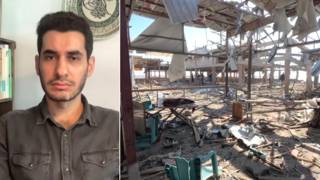
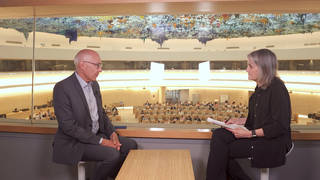
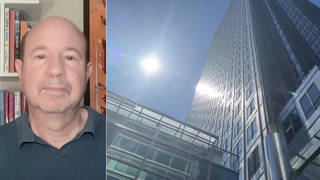
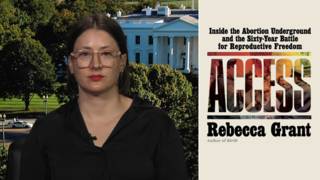




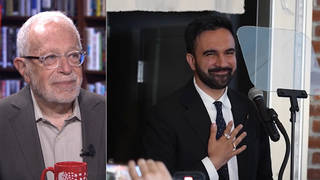

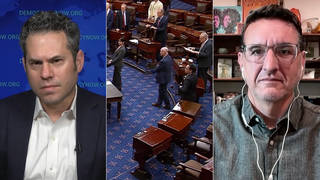
Media Options